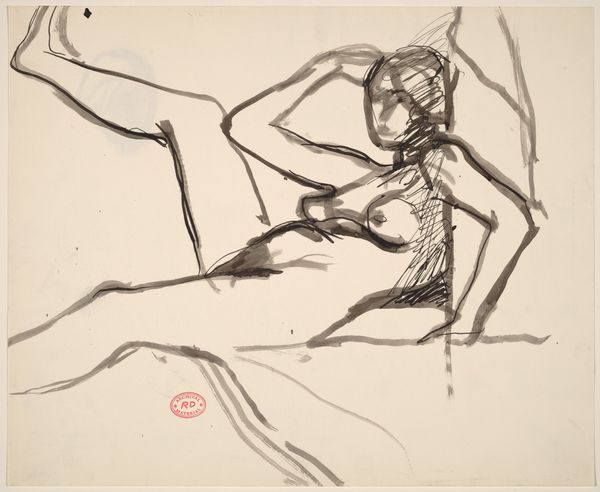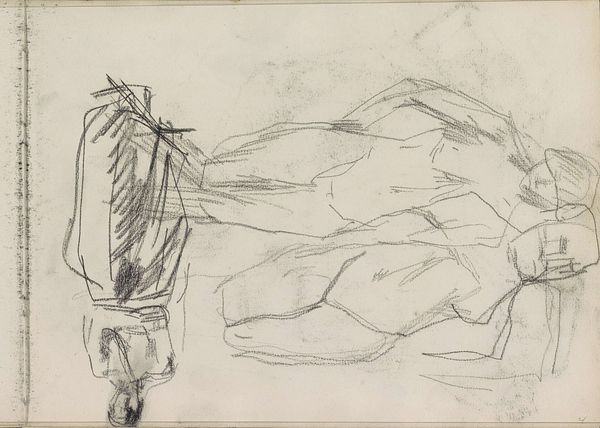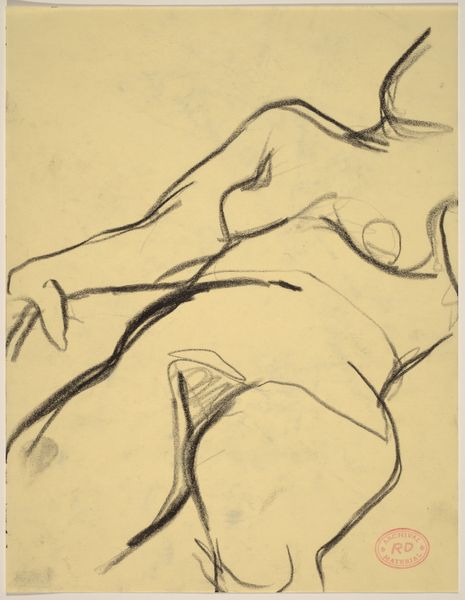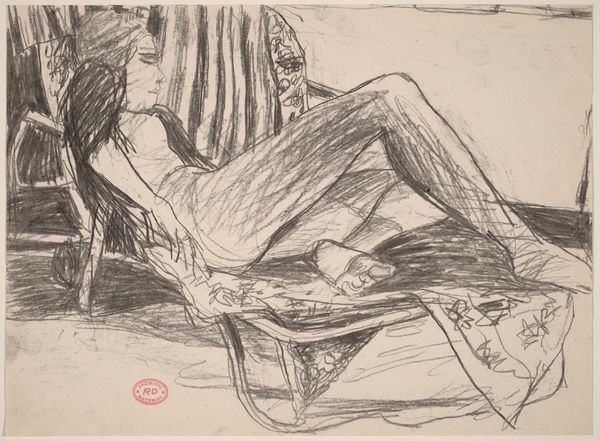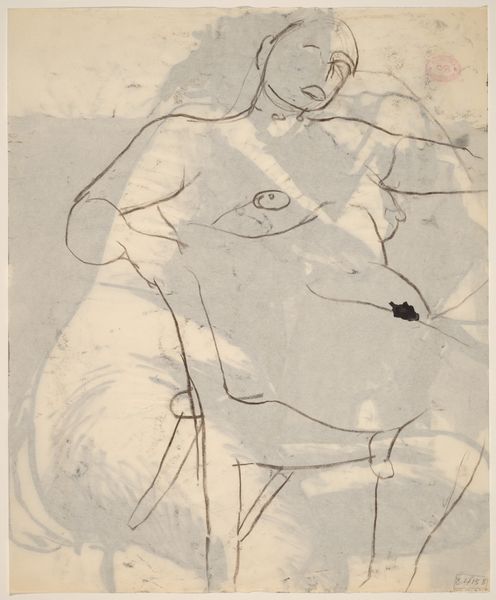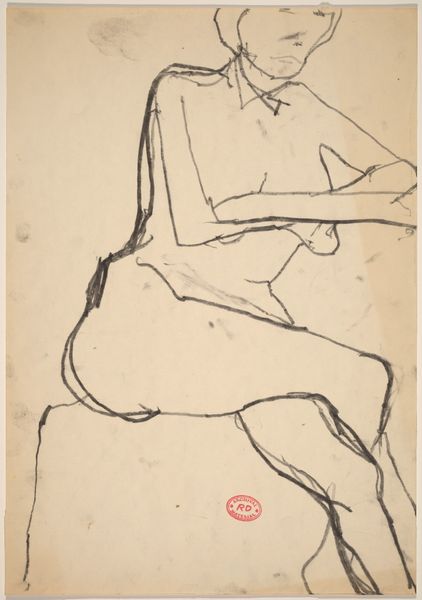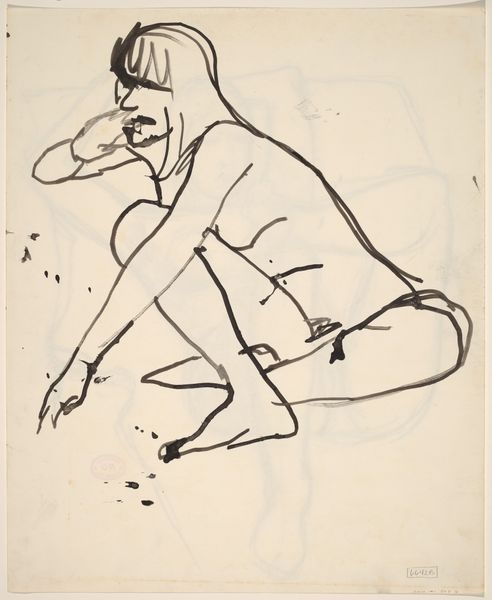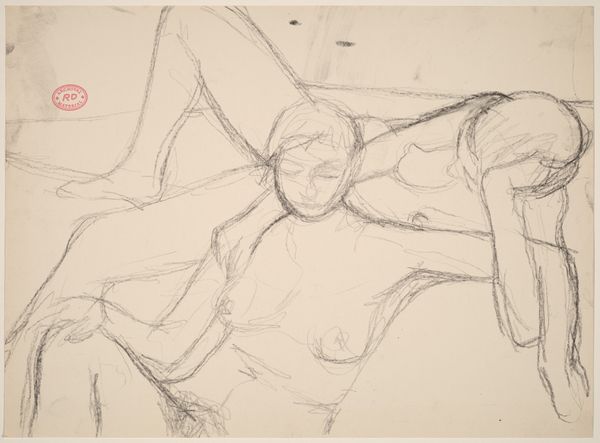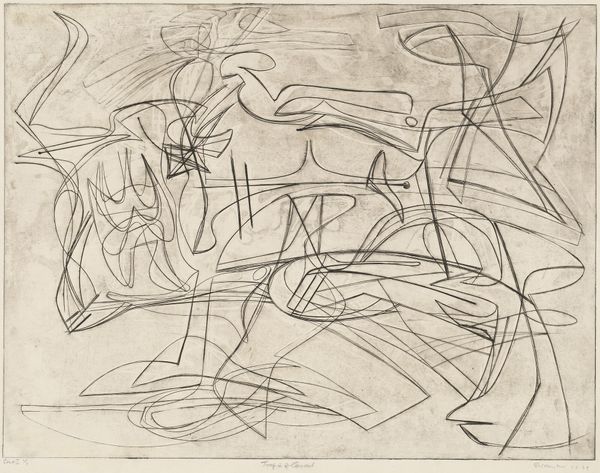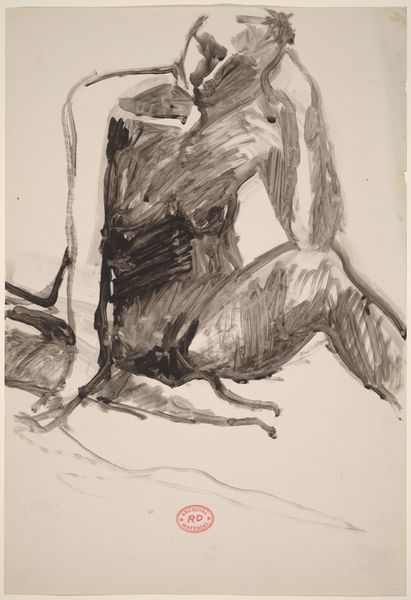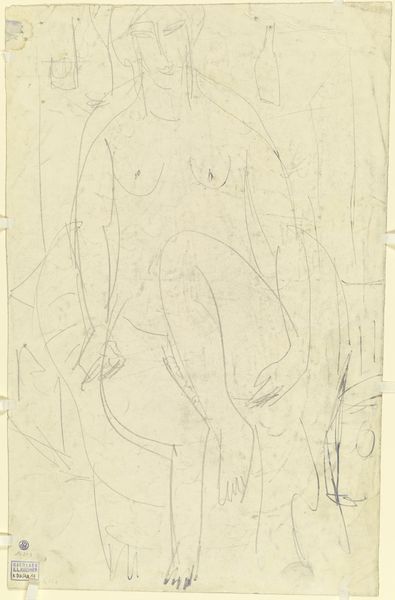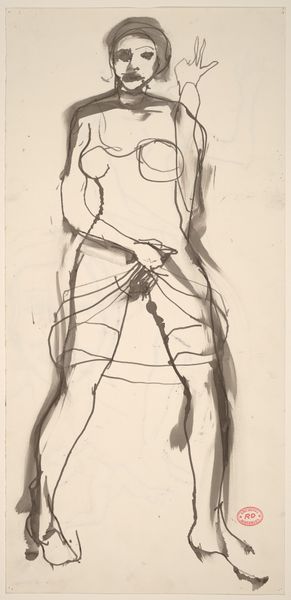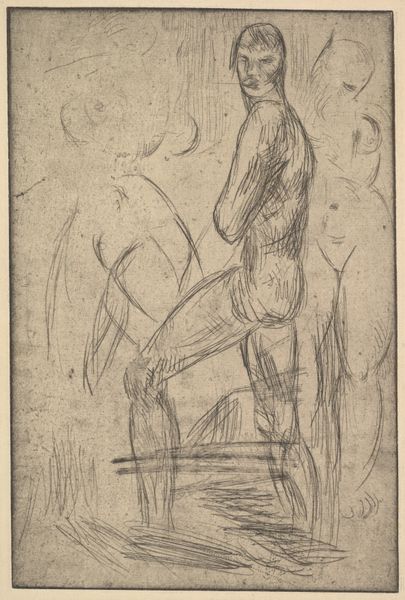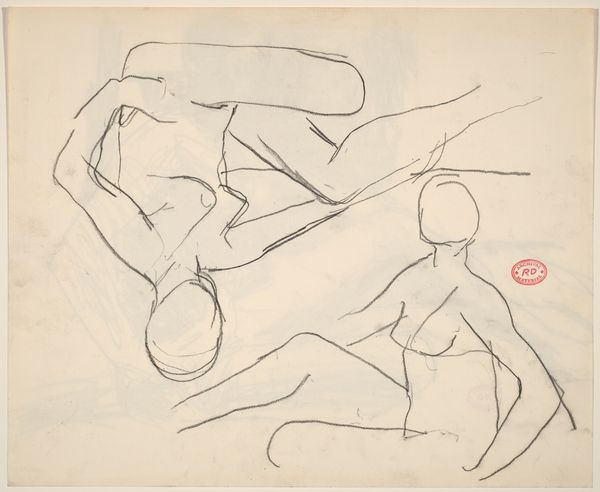![Untitled [reclining female nude with arms raised] [verso] by Richard Diebenkorn](/_next/image?url=https%3A%2F%2Fd2w8kbdekdi1gv.cloudfront.net%2FeyJidWNrZXQiOiAiYXJ0ZXJhLWltYWdlcy1idWNrZXQiLCAia2V5IjogImFydHdvcmtzLzUzZjIxMjUwLWJlNGQtNDIwYi05NWY0LTc2MzQ3NzNlOWNhYy81M2YyMTI1MC1iZTRkLTQyMGItOTVmNC03NjM0NzczZTljYWNfZnVsbC5qcGciLCAiZWRpdHMiOiB7InJlc2l6ZSI6IHsid2lkdGgiOiAxOTIwLCAiaGVpZ2h0IjogMTkyMCwgImZpdCI6ICJpbnNpZGUifX19&w=3840&q=75)
Untitled [reclining female nude with arms raised] [verso] 1955 - 1967
0:00
0:00
drawing, ink
#
drawing
#
ink drawing
#
figuration
#
bay-area-figurative-movement
#
ink
#
line
#
nude
Dimensions: overall: 35.6 x 43.2 cm (14 x 17 in.)
Copyright: National Gallery of Art: CC0 1.0
Curator: Before us is an untitled ink drawing by Richard Diebenkorn, created sometime between 1955 and 1967. The verso depicts a reclining female nude with arms raised. Editor: Stark. Almost jarring in its starkness, really. The economy of line, the washes of ink… there’s a real immediacy to the work. It feels like a fleeting impression, not a study meant for refinement. Curator: Precisely. Note how Diebenkorn uses the ink, almost as if sculpting the negative space around the figure. The bold strokes define form, yet simultaneously flatten it. The interplay of line creates a tension, doesn't it? An oscillation between representation and abstraction. We also see ghostly remains of another reclining figure in the background. Editor: Absolutely. The washes surrounding the primary figure speak to the qualities inherent in the application of ink, pooling in places to add depth but quickly drawn elsewhere in order to direct our gaze to the posture and gestural attitude of the main subject. You see the artist exploring the behavior of the material itself here—ink as medium. Curator: I am inclined to believe that this tension is exactly the source of power in this composition. The abstraction provides an emotional and intellectual distance, forcing the viewer to complete the image in their own mind, or to accept an almost unfinished idea, so to speak. Editor: Yes, and the implied labor should not be ignored; a drawing like this requires not just skill but a certain kind of embodied knowledge—a knowledge born of handling materials, of understanding their limits and capabilities. It’s not just about aesthetic contemplation; it’s also a testament to the processes involved in creation, and to the value ascribed, or not, to this mode of artmaking. Curator: A very fair point, indeed. Ultimately, the viewer must approach Diebenkorn’s work on its own formal terms, judging its strengths based upon composition, gesture, line quality, and application of medium on its own structuralist terms, even with this nod toward social underpinnings. Editor: So, while you see a structural exercise, I see a record of activity, a testament to how material engagement and the act of making inform meaning as significantly as intention and subject. Interesting to consider.
Comments
No comments
Be the first to comment and join the conversation on the ultimate creative platform.
